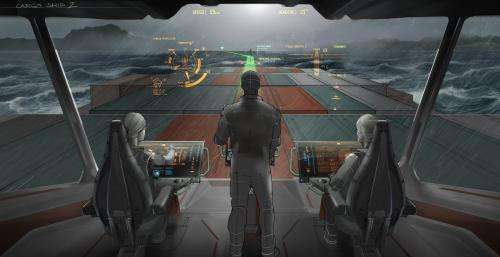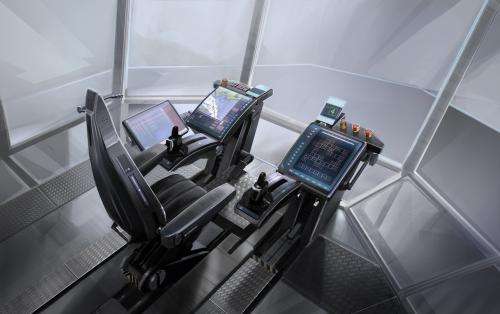Envisioning seafaring in 2025

VTT and Rolls-Royce have worked together on brand new solutions for crews manning the bridges of tugs, cargo ships, and platform supply vessels in the year 2025. These innovations draw on the long experience Rolls-Royce has with developing bridge design and also on mariners' operational expertise. The visions for 2025 have been illustrated in the shape of stories and pictures, and finally turned into impressive 3D animations produced by TrollVFX. Also remote operation of ships belongs to the vision of future seafaring, and a new research project coordinated by VTT has started.
In the design of future innovations for seafaring, VTT's researchers in cooperation with Rolls-Royce combined research of crew operations, future studies, and user experience design. Crewmembers, including ship captains and first mates, were on board this project to evaluate ideas contributing to safety, energy savings, and functionality.
The designs are very forward-looking, envisioning what seafaring could be like a decade from now, and are presented in video form – this approach can renew the thinking of the key players in this field.
Working on a ship's bridge in 2025
Most of the solutions shown in the videos – even the unusual ones – can be implemented using existing technologies.
Smart workstations adjust themselves based on who sits down at them. The bridge window serves as a heads-up display, showing not only navigation information, but also the routes of one's own ship and other ships. Augmented reality technology enables crewmembers to keep an eye on obstacles that would otherwise be obscured by distance or weather. A sea ice analyser indicates whether the planned route in ice conditions is safe and economically feasible. In the future, it will still be important for the watchman to keep his or her eyes on the sea: for instance, when it is dark outside, the window displays thermal camera images directly over the external world, enabling the watchman to remain focused on the sea.
Remote control – the future of maritime transport?
In terms of the technology required, operating a container vessel by remote control is already a real possibility. However, before fully unmanned vessels can be launched on seas, widespread public approval is also required.

Remote control is already an alternative, with certain functions being controlled from the ship's bridge or, alternatively, from a land-based control room. This helps to improve maritime safety, facilitate assignments and increase the cost-efficiency of shipping companies.
One of the most successful FIMECC UXUS Projects in 2013
The ship bridge project was carried out as part of innovation company FIMECC Oy's FIMECC UXUS programme (User experience and usability in complex systems) in 2012–2013. "The project has successfully combined experience-driven design, in-depth psychological and operational analysis of tasks, and the envisioning of future technological solutions, and has packaged them in the form of impressive, futuristic videos that will inspire actors in this field to adopt user experience based solutions," says Programme Manager Maaria Nuutinen.
FIMECC is a cluster for cutting-edge strategic expertise in metals and engineering. Its mission is to bring together industry's views on future sources of competitiveness with the expertise of research institutions. www.fimecc.com/
The main participants in the project were Rolls-Royce Marine, VTT, and Aalto University. The 3D animated videos were made by TrollVFX, a company known for its work on the film Iron Sky.
In an on-going FIMECC UXUS project VTT, Rolls-Royce Marine and University of Tampere are studying the remote control of ships. The project will end in 2015.
Provided by VTT Technical Research Centre of Finland

















